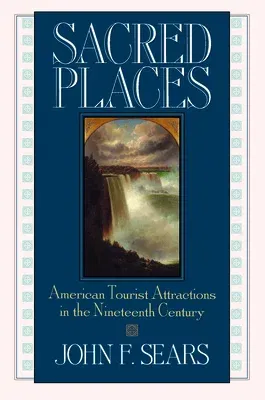Tourism emerged as an important cultural activity in the United States
in the 1820s as steamboats and canals allowed for greater mobility and
the nation's writers and artists focused their attention on American
scenery. From the 1820s until well after the Civil War, American
artists, like Thomas Cole and Frederic Church, depicted American tourist
attractions in their work, and often made their reputations on those
paintings. Writers like Irving, Cooper, Hawthorne, and James described
their visits to the same attractions or incorporated them into their
fiction. The work of these artists and writers conferred value on the
scenes represented and helped shape the vision of the tourists who
visited them. This interest in scenery permeated the work of both
serious and popular writers and artists, and they produced thousands of
images and descriptions of America's tourist attractions for the
numerous guidebooks, magazines, and other publications devoted to travel
in the United States during the period.
Drawing on this fascinating body of material, Sacred Places examines
the vital role which tourism played in fulfilling the cultural needs of
nineteenth-century Americans. America was a new country in search of a
national identity. Educated Americans desperately wished to meet
European standards of culture and, at the same time, to develop a
distinctly American literature and art. Tourism offered a means of
defining America as a place and taking pride in the special features of
its landscape. The country's magnificent natural wonders were a
substitute for the cathedrals and monuments, the sense of history that
Europe had built over the centuries. Moreover, Sears argues, tourist
attractions like Mammoth Cave, Mount Auburn Cemetery, Yosemite, and
Yellowstone functioned as sacred places for a nation with a diversity of
religious sects and without ancient religious and national shrines. For
nineteenth-century Americans, whose vision was shaped by the aesthetics
of the sublime and the picturesque and by the popular nineteenth-century
Romantic view of nature as temple, such places fulfilled their urgent
need for cultural monuments and for places to visit which transcended
ordinary reality.
But these nineteenth-century tourist attractions were also arenas of
consumption. Niagara Falls was the most sublime of God's creations, a
sacred place, which, like Mount Auburn Cemetery, was supposed to have a
profound moral effect on the spectator. But it was also an emporium of
culture where the tourist shopped for Niagara's wonders and for little
replicas of the Falls in the form of souvenirs. In Sacred Places,
Sears describes how this strange, sometimes amusing, juxtaposition of
the mythic and the trivial, the sacred and the profane, the spiritual
and the commercial remained a significant feature of American tourist
attractions even after efforts were made at Yosemite, Yellowstone, and
Niagara Falls to curb commercial and industrial intrusions.
Sears also explores how the nineteenth-century idealization of home
stimulated the tourists' response to such places as the Willey House in
the White Mountains, the rural cemeteries, and even the newly
established asylums for the deaf, dumb, blind, and insane. And, in an
intriguing account of Mauch Chunk, Pennsylvania, he examines the reasons
why an important nineteenth-century anthracite transportation center was
also a major tourist attraction.
Most of the attractions discussed in this book are still visited by
millions of Americans. By illuminating their cultural meaning, Sacred
Places prompts us to reflect on our own motivations and responses as
tourists and reveals why tourism was and still is such an important part
of American life.

